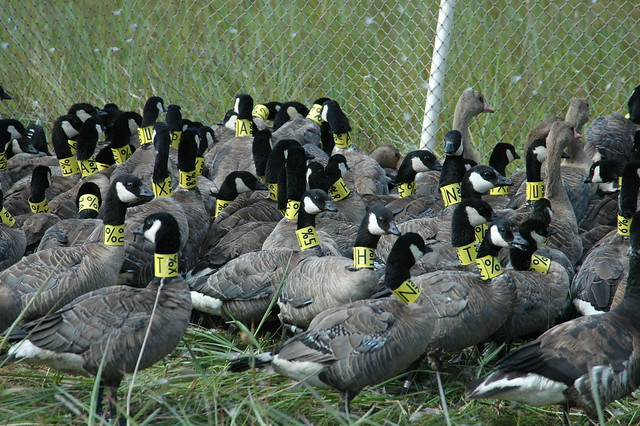1. Description of Research Question
Disease transmission is intrinsically tied to space use and behavior: Individuals are exposed to pathogens based on where and with whom they spend their time. I will explore how different spatial personalities may affect individual disease risk and herd disease dynamics in a social species. For this project, I will specifically examine individual realized aggregation (IRA), or the degree to which different individuals in my study system aggregate with others, and will relate IRA to risk of exposure to directly transmitted diseases. To explore this question, I will make use of a unique study system of GPS-collared semi-wild African Buffalo (Syncerus caffer) located in Kruger National Park (KNP), South Africa.

2. Description of Dataset
The dataset I will be analyzing consists of approximately eight months of GPS readings from each of the 70 individual buffalo in the herd, collected at ~30 minute intervals. Accuracy tests have yet to be performed, but GPS collars should have at least 5-10 meter accuracy range. The map below shows the 900 hectare enclosure which serves as the study area.
For a project in a previous class, I created tracking animations using a subset of data from a single individual during a 24-hour period. Output from the tracking tool is shown below. This output shows that we can distinguish between periods of high movement (i.e. tracks are far apart) versus low movement (tracks close together) for each individual.

3. Hypotheses
I hypothesize that individuals will have different spatial behavioral personalities, demonstrated by the maintenance of relatively stable differences in IRA. This hypothesis is based on previous field observations, suggesting that individuals maintain stable herd positions over time. I further hypothesize that individuals with high IRA will be exposed to more directly transmitted diseases than those with low IRA.
4. Approaches
I expect that the approaches I take will evolve throughout the course of this project, but currently my plan is as follows:
My first step will be putting the buffalo movement data in the correct format. Currently, I have separate text files of GPS readings for each individual buffalo over each capture period. I will need to combine all individuals into a single spreadsheet for each capture period in order look at relative positions of individuals within the herd. I will then sample time points from across the capture period (controlling for weather conditions and time of day) and generate 5, 10, 15, 20, and 25 meter buffers around each buffalo. I will use the buffer zones to calculate number of individuals within each radius and determine the degree of IRA for each individual. I will then compare IRA to disease exposure and infection data collected as part of a larger Foot-and-Mouth Disease Virus study to determine whether there is a relationship between exposure/infection and IRA. Because this is such an extensive dataset, I hope to be able to automate the process of generating buffers around each buffalo at each time point using programming in ArcGIS.
5. Expected Outcome
I want to statistically evaluate IRA for each individual buffalo and produce graphs of average number of neighboring individuals per radius size for each individual. I also hope to statistically evaluate relationships between directly transmitted disease exposure and IRA.
6. Significance
Understanding disease dynamics in social mammals is of fundamental importance in the current context of accelerated infectious disease emergence. Owing to a uniquely tractable study system, this work will be the first to categorize individual variation in spatial behavior and link it to disease risks and transmission dynamics.
This work has implications for predicting and managing animal and human diseases. If key individuals for disease transmission can be identified based on spatial-behavioral traits, efficacy and efficiency of disease control could be optimized via targeted interventions.
7. Level of Preparation
I have moderate experience in GIS and statistical analysis in R. I have completed ST 511 and 512 (Methods of Data Analysis), and for a current side project I am using R to analyzed blood chemistry parameters using linear mixed models. I have taken two GIS courses: Geo 565 (Intro GIS) and Geo 580 (advanced GIS) and have used subsets of my data for projects in both of those courses. However, I definitely am not an expert in either GIS or R and will need help navigating both programs.

























